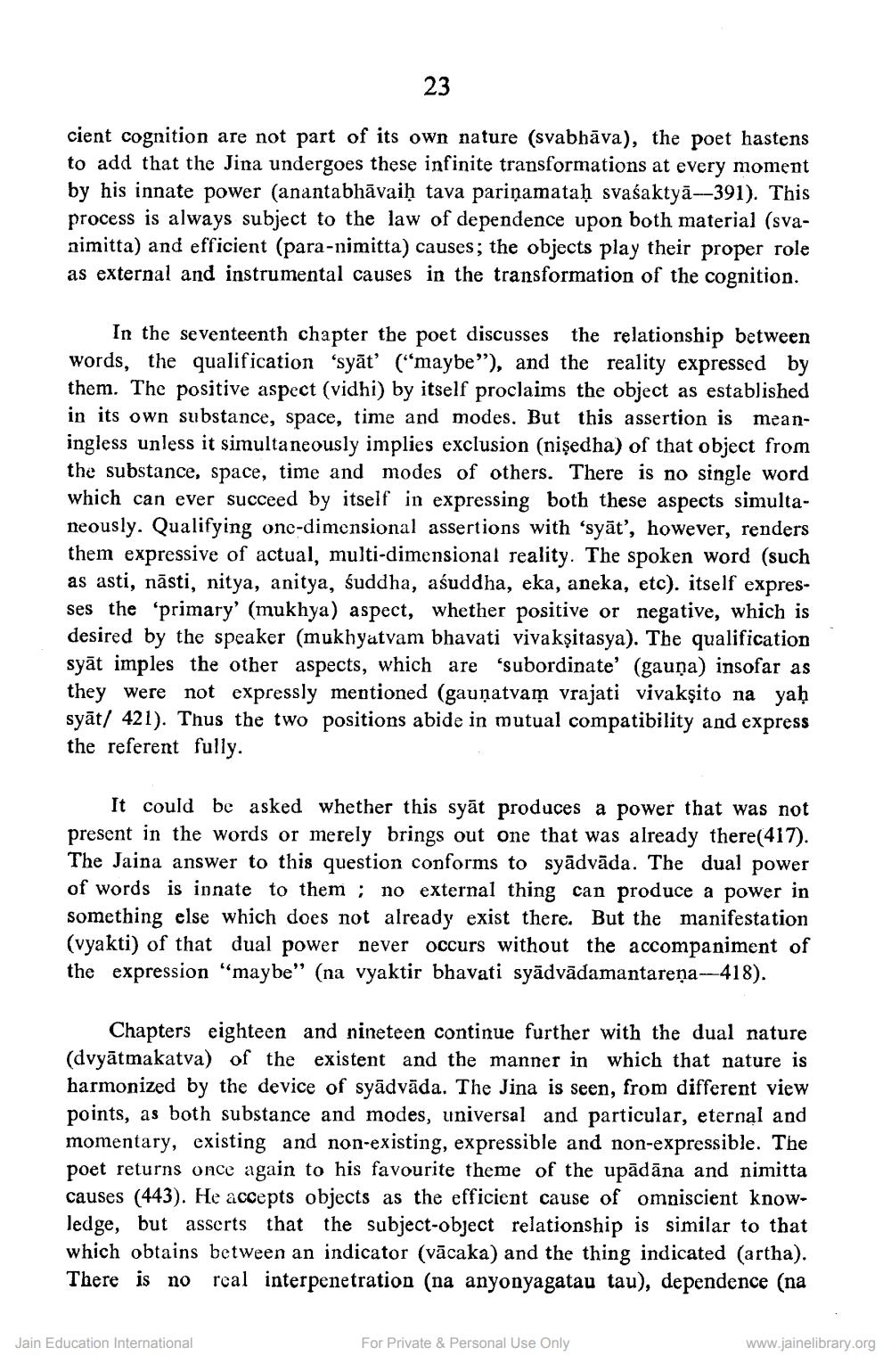________________
23
cient cognition are not part of its own nature (svabhava), the poet hastens to add that the Jina undergoes these infinite transformations at every moment by his innate power (anantabhavaiḥ tava pariņamataḥ svaśaktyā-391). This process is always subject to the law of dependence upon both material (svanimitta) and efficient (para-nimitta) causes; the objects play their proper role as external and instrumental causes in the transformation of the cognition.
In the seventeenth chapter the poet discusses the relationship between words, the qualification 'syat' ("maybe"), and the reality expressed by them. The positive aspect (vidhi) by itself proclaims the object as established in its own substance, space, time and modes. But this assertion is meaningless unless it simultaneously implies exclusion (nişedha) of that object from the substance, space, time and modes of others. There is no single word which can ever succeed by itself in expressing both these aspects simultaneously. Qualifying one-dimensional assertions with 'syat', however, renders them expressive of actual, multi-dimensional reality. The spoken word (such as asti, nāsti, nitya, anitya, śuddha, aśuddha, eka, aneka, etc). itself expresses the 'primary' (mukhya) aspect, whether positive or negative, which is desired by the speaker (mukhyatvam bhavati vivakşitasya). The qualification syat imples the other aspects, which are 'subordinate' (gauņa) insofar as they were not expressly mentioned (gaunatvam vrajati vivakşito na yaḥ syat/ 421). Thus the two positions abide in mutual compatibility and express the referent fully.
It could be asked whether this syāt produces a power that was not present in the words or merely brings out one that was already there(417). The Jaina answer to this question conforms to syadvāda. The dual power of words is innate to them; no external thing can produce a power in something else which does not already exist there. But the manifestation (vyakti) of that dual power never occurs without the accompaniment of the expression "maybe" (na vyaktir bhavati syadvadamantarena-418).
Chapters eighteen and nineteen continue further with the dual nature (dvyātmakatva) of the existent and the manner in which that nature is harmonized by the device of syādvāda. The Jina is seen, from different view points, as both substance and modes, universal and particular, eternal and momentary, existing and non-existing, expressible and non-expressible. The poet returns once again to his favourite theme of the upādāna and nimitta causes (443). He accepts objects as the efficient cause of omniscient knowledge, but asserts that the subject-object relationship is similar to that which obtains between an indicator (vācaka) and the thing indicated (artha). There is no real interpenetration (na anyonyagatau tau), dependence (na
Jain Education International
For Private & Personal Use Only
www.jainelibrary.org




